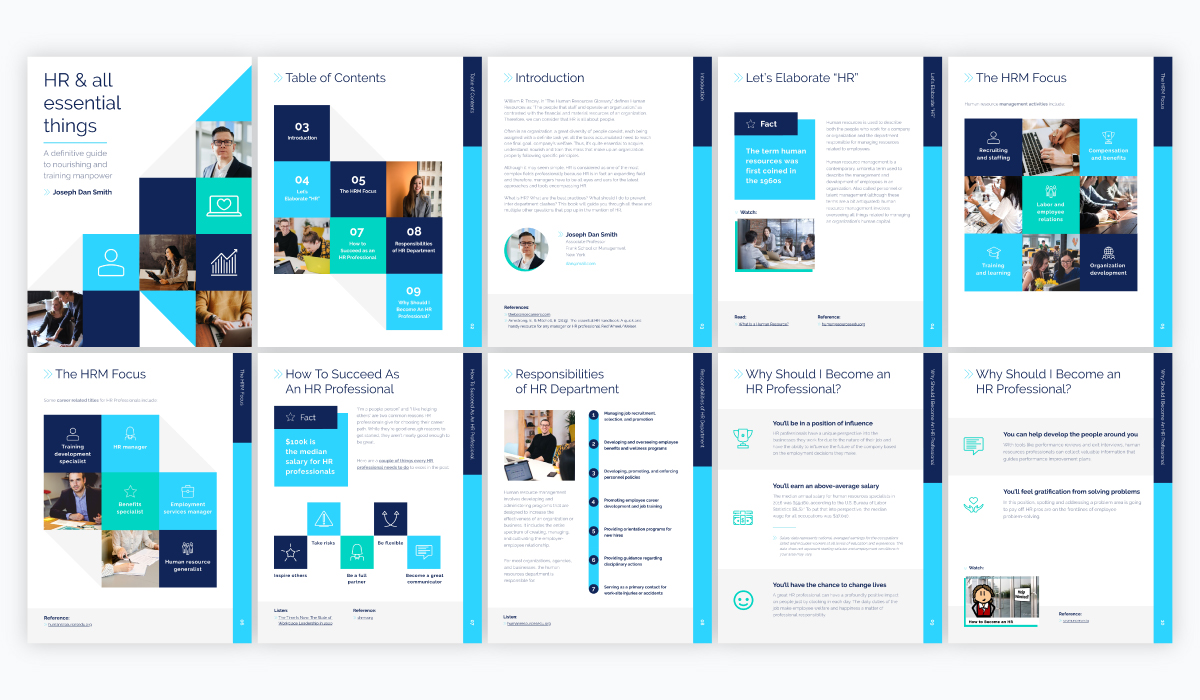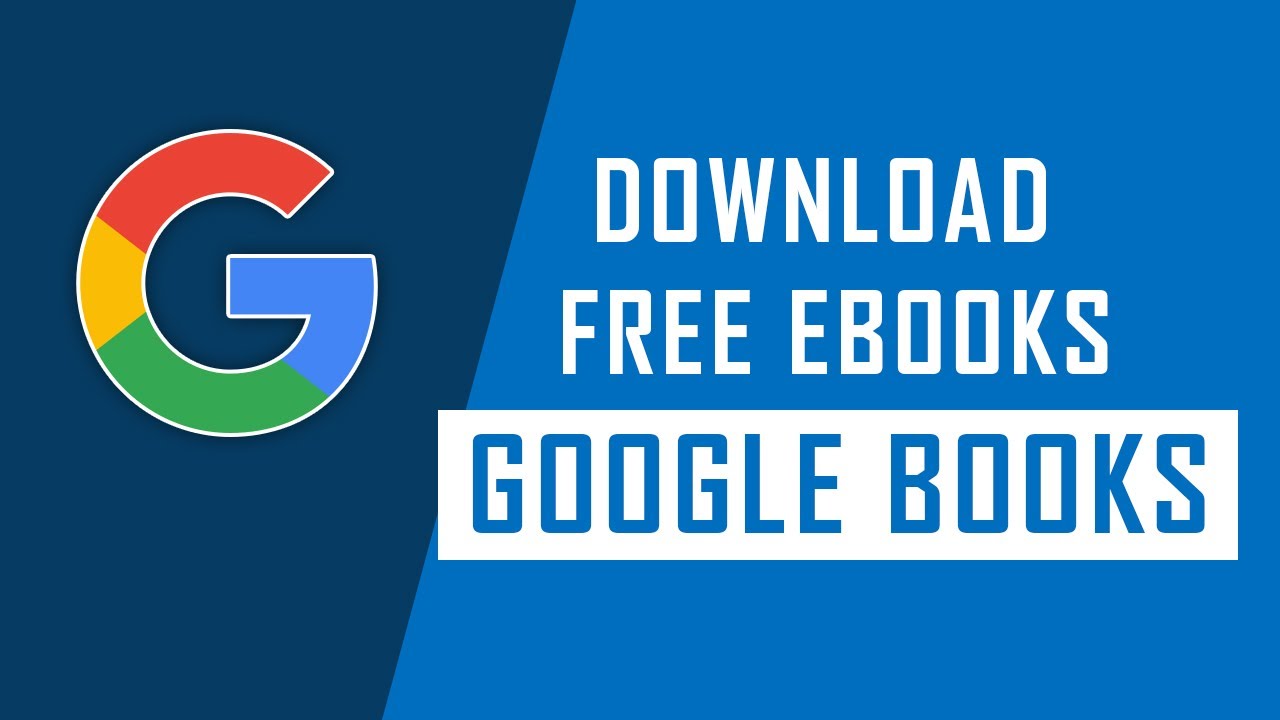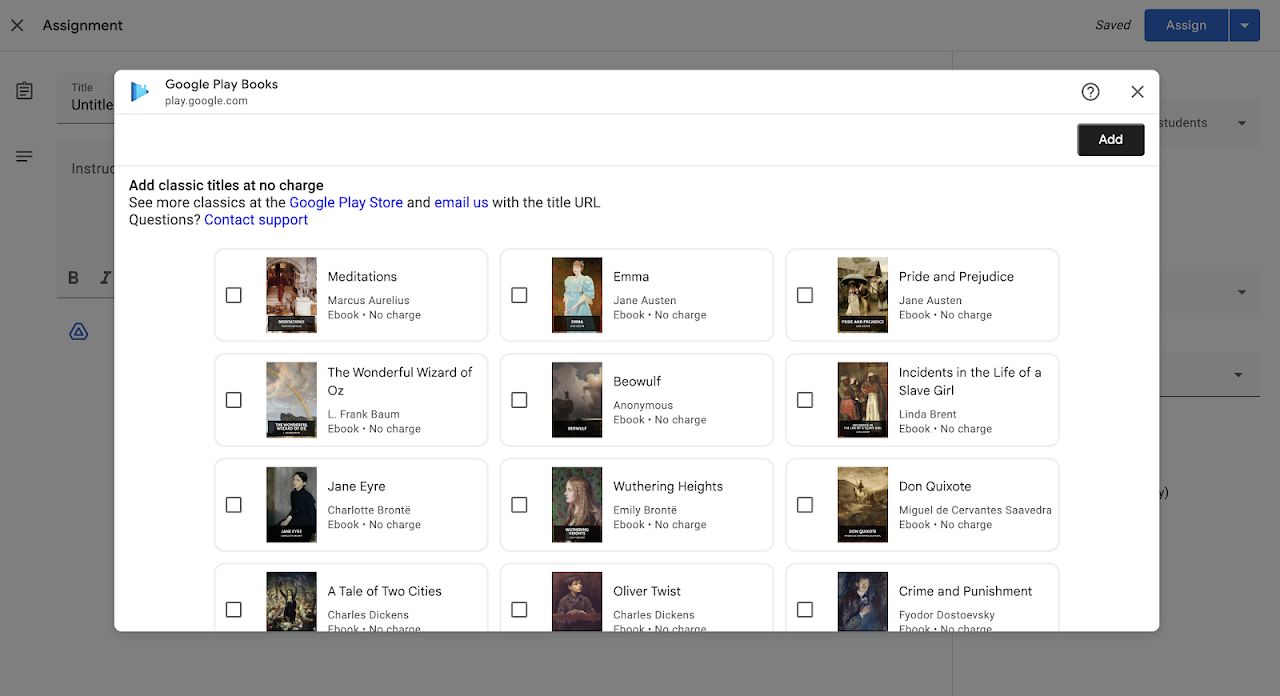Introduction
Have you ever had an incredible idea for an eBook? Maybe you’ve always wanted to share your knowledge with the world or tell a captivating story. Whatever the reason, writing an eBook is an exciting journey that can lead to personal fulfillment and even financial success.
In this comprehensive guide, we will explore the step-by-step process of starting an eBook, from determining the topic and target audience to publishing and promoting your masterpiece. Whether you’re a seasoned writer or just starting out, this guide will provide you with the valuable insights and practical tips you need to get started.
With the rise of digital publishing, eBooks have become increasingly popular. They offer a convenient way for readers to access content and provide authors with a flexible platform to showcase their work. Plus, the ability to self-publish means that anyone can bring their eBook to life without relying on traditional publishing channels.
However, starting an eBook can be a daunting task if you’re not familiar with the process. That’s where this guide comes in. We will break down each step into manageable chunks and provide you with actionable advice to help you overcome any challenges you may encounter along the way.
Whether you’re writing a non-fiction eBook to share your expertise or a fiction eBook to entertain and inspire, the principles and techniques discussed in this guide apply to all genres. So, if you’re ready to embark on the journey of a lifetime and bring your eBook to fruition, let’s dive in and explore the fascinating world of eBook writing!
Step 1: Determine the Topic and Target Audience
Before you start writing your eBook, it’s crucial to determine the topic and target audience. Choosing the right topic will not only keep you motivated throughout the writing process, but it will also ensure that your eBook resonates with your readers.
Begin by brainstorming ideas. Think about your areas of expertise, passions, and personal experiences. What knowledge or stories do you have that others would find valuable or interesting? Consider your target audience’s interests and needs. What kind of information or entertainment are they seeking?
Research popular trends and topics in your niche. Look at what other eBooks are currently selling well and analyze their content. This will give you insights into what is in demand and help you identify any gaps in the market that you could fill with your eBook.
Next, narrow down your ideas and choose a topic that aligns with your expertise and interests, as well as the needs of your target audience. It’s important to strike a balance between writing about something you’re passionate about and catering to a market that is interested in your topic.
Once you’ve chosen a topic, it’s time to define your target audience. Think about who would benefit the most from your eBook. Consider factors such as age, gender, occupation, interests, and goals. Understanding your target audience will help you tailor your writing style and content to resonate with them.
Conduct market research to gain a deeper understanding of your target audience. Look for online forums, social media groups, and blogs where your potential readers gather. Engage with them, ask questions, and listen to their needs and preferences. This will provide invaluable insights that you can use to create a highly targeted eBook.
Remember, the topic and target audience will dictate the tone, style, and content of your eBook. By choosing a topic that you’re passionate about and aligning it with the needs of your target audience, you’ll create a powerful and engaging eBook that will capture the attention of your readers.
Step 2: Research and Gather Information
Once you have identified your eBook’s topic and target audience, it’s time to dive into research and gather the necessary information. Good research lays the foundation for a well-informed and authoritative eBook that will resonate with your readers.
Begin by exploring credible sources related to your topic. This can include books, academic journals, reputable websites, and industry reports. Take detailed notes and bookmark relevant resources for future reference. The more information you gather, the better equipped you’ll be to create a comprehensive and valuable eBook.
It’s also essential to conduct keyword research. Identify the keywords and phrases that are commonly searched for within your niche. This will help you optimize your eBook for search engines, increasing its visibility and attracting potential readers.
Interviewing experts in the field is another effective way to gather information. Seek out authorities or individuals who have extensive knowledge or experience in your topic area. Conduct interviews, either in person or over phone or email, and ask them relevant questions to extract valuable insights and unique perspectives.
Don’t underestimate the power of firsthand experience. Depending on your topic, you may need to immerse yourself in the subject matter. Whether it’s through participating in relevant activities, visiting specific locations, or conducting experiments, experiencing the subject firsthand will add depth and authenticity to your eBook.
When conducting research, it’s important to fact-check and cross-reference your sources to ensure accuracy. Avoid relying solely on one source, as this can lead to biased or incomplete information. Instead, strive for a well-rounded and comprehensive understanding of your topic by consulting multiple sources.
Organize your research materials in a way that works best for you. Use digital tools like Evernote or Google Docs, or opt for traditional methods such as a physical binder or notebook. Create clear and logical categories, making it easy to find the information you need as you write your eBook.
By dedicating time to thorough research and gathering relevant information, you’ll position yourself as an expert in your field and provide your readers with valuable insights and knowledge in your eBook.
Step 3: Outline the eBook
Creating a clear and organized outline for your eBook is an essential step that will guide the writing process and ensure a well-structured and cohesive final product. An outline serves as a roadmap, allowing you to see the big picture and break down your content into manageable sections.
Start by brainstorming the main ideas and key points that you want to cover in your eBook. These will form the foundation of your outline. Consider the logical flow of information and how each section will seamlessly transition into the next.
Divide your eBook into chapters or sections. This will give structure to your content and make it easier for readers to navigate through the information. Each chapter should focus on a specific subtopic or aspect related to your main theme.
Within each chapter, create subsections or subheadings that further break down the content. This will help you organize your thoughts and ensure that you cover all the necessary points. Think of these subheadings as mini-summaries of what will be discussed in each section.
Take the time to prioritize the information within each section. Arrange the subheadings in a logical order that will guide the reader’s understanding and flow smoothly from one topic to the next. This will also help you maintain a coherent narrative throughout your eBook.
Don’t be afraid to revise and refine your outline as you go. As you delve deeper into your research and writing process, new ideas may emerge, requiring adjustments to your initial outline. Remain flexible and open to changes that will enhance the overall structure and message of your eBook.
A well-crafted outline will not only save you time and prevent writer’s block, but it will also provide clarity and focus as you progress through the writing process. It’s like having a roadmap that keeps you on track and ensures that you cover all the essential points of your eBook.
Remember, the outline is the backbone of your eBook. So take the time to thoughtfully organize and structure your content, and you’ll be well on your way to creating a compelling and engaging eBook.
Step 4: Start Writing
With your outline in place, it’s time to dive into the actual writing of your eBook. This step is where your ideas and research come to life on the pages, enabling you to share your knowledge, stories, or insights with your readers.
Start by setting aside dedicated time for writing. Create a writing schedule that works best for you, whether it’s early in the morning, late at night, or on weekends. Consistency is key, so aim to write regularly to maintain momentum and progress steadily towards completing your eBook.
When starting each writing session, review your outline for the section you’ll be working on. Familiarize yourself with the main points and subheadings to ensure a focused and cohesive writing process.
Don’t worry about being perfect in your initial drafts. The first draft is just the beginning, and revisions will come later. Focus on getting your ideas down on paper and letting your creativity flow. The goal is to have a solid foundation that can be refined and improved in subsequent drafts.
Avoid getting caught up in self-editing as you write. Let your thoughts flow freely without being overly critical of each sentence. Instead, aim to capture the essence of your ideas and convey them in a clear and engaging manner.
If you find yourself facing writer’s block, try different techniques to get your creativity flowing. Take short breaks, switch up your environment, or engage in activities that inspire you. Sometimes, a fresh perspective can unlock your writing potential.
As you write, keep your target audience in mind. Use language and tone that resonates with them. Avoid jargon or overly complex language unless your audience is specifically looking for that level of depth. Aim for a balance between being informative and engaging so that your readers can easily understand and relate to your content.
Remember, writing is a process that requires time and patience. Embrace the journey, and don’t be too hard on yourself. The important thing is to keep pushing forward, writing consistently, and refining your manuscript as you go.
By following this step, you’ll make significant progress in bringing your eBook to life and sharing your unique insights and knowledge with your readers.
Step 5: Edit and Revise
Editing and revising your eBook is a crucial step in refining your content and ensuring its quality and readability. Through this process, you’ll be able to polish your writing, improve clarity, fix errors, and enhance the overall flow of your eBook.
Start by taking a break from your manuscript after completing the initial draft. This break allows for fresh eyes and a new perspective. When you return to your eBook, you’ll be more objective and better equipped to spot areas that need improvement.
Begin by reviewing the structure and organization of your eBook. Ensure that your chapters, sections, and subheadings flow logically and smoothly. Check that your content is arranged in a way that makes sense and is easy for readers to follow. Rearrange sections or paragraphs if needed to enhance the coherence of your eBook.
Next, focus on the language and style of your writing. Look for areas where sentences can be refined or made more concise. Remove any unnecessary or repetitive words or phrases that can hinder the clarity of your message. Pay attention to grammar, spelling, and punctuation, ensuring that your eBook is error-free and professional.
Consider seeking feedback from trusted beta readers or hiring a professional editor. Another person’s perspective can provide valuable insights and identify areas for improvement that you might have missed. Take their feedback into consideration and make necessary revisions to enhance the quality of your eBook.
Read your eBook aloud. This technique helps you identify awkward sentences, grammatical errors, or parts that don’t flow smoothly. Make adjustments as you go, improving the rhythm and readability of your writing.
Remember to maintain a consistent tone throughout your eBook. Ensure that your writing style aligns with your target audience and the message you want to convey. Adjust the tone where necessary to create a more engaging and relatable reading experience.
Repeat the editing and revision process multiple times, aiming to refine your eBook with each pass. Take the time required to give your eBook the attention it deserves. The more effort you put into editing and revising, the better the final result will be.
By thoroughly editing and revising your eBook, you ensure its quality and readability, making it a valuable and enjoyable reading experience for your audience.
Step 6: Design the eBook Cover
The eBook cover is the first impression that potential readers will have of your eBook, so it’s crucial to design a visually appealing and captivating cover that grabs their attention and entices them to explore further.
When designing your eBook cover, consider the following elements:
- Title and Subtitle: Choose a title and subtitle that accurately represents the content of your eBook and appeals to your target audience. Keep it concise and use fonts and colors that are easily readable.
- Images and Graphics: Select relevant images and graphics that enhance the theme or topic of your eBook. Ensure that the visuals are of high quality and resonate with your target audience.
- Color Scheme: Use a color scheme that evokes the desired emotions and aligns with your eBook’s genre or topic. Consider the psychology of colors and how they can influence a reader’s perception and interest in your eBook.
- Typography: Choose fonts that are visually appealing, easy to read, and align with the overall tone of your eBook. Consider using different font styles to create visual hierarchy and emphasize important elements.
- Layout and Composition: Create a visually balanced and engaging layout for your eBook cover. Experiment with different arrangements and compositions to find the most visually pleasing design.
- Branding: If you have an established brand or author platform, incorporate your branding elements, such as logos or taglines, into the eBook cover to create brand recognition.
Consider hiring a professional graphic designer to create your eBook cover. They have the expertise and tools to design a visually stunning cover that stands out in a competitive market. If you’re on a budget, there are also numerous online platforms and tools available that provide pre-made templates for eBook covers, allowing you to customize them to suit your needs.
When finalizing your eBook cover design, always remember to check the specifications and requirements of the publishing platform you’ll be using. Ensure that your cover meets their guidelines for size, resolution, format, and file type.
Remember, your eBook cover is the first impression readers will have of your eBook. So invest time and effort into designing a visually appealing and eye-catching cover that accurately represents your content and resonates with your target audience.
Step 7: Format the eBook
Formatting your eBook is an essential step in preparing it for publication and ensuring a professional and visually pleasing reading experience for your audience. Proper formatting enhances readability, allows for easy navigation, and ensures compatibility across various devices and platforms.
Here are some key considerations when formatting your eBook:
- Choose the right eBook format: Select the appropriate eBook format based on your target audience and the publishing platform requirements. The most common eBook formats include EPUB, MOBI, and PDF.
- Consistent design elements: Maintain consistency in fonts, font sizes, line spacing, and paragraph indentations throughout your eBook. This ensures a cohesive and professional look.
- Table of contents: Include a well-structured table of contents that allows readers to easily navigate through your eBook. Link each chapter or section to its corresponding page for quick and convenient access.
- Images and graphics: Optimize images and graphics for digital viewing. Compress the file sizes to ensure smooth integration and fast loading times. Place images strategically within the text and ensure they align properly on various screen sizes.
- Hyperlinks: If your eBook contains hyperlinks, such as references to external websites or internal cross-references, test them thoroughly to ensure they are correctly embedded and functional in the eBook format you choose.
- Readable fonts: Select fonts that are easy to read on different devices and sizes. Sans-serif fonts like Arial or Verdana are often preferred for digital reading due to their clarity.
- Page breaks and chapters: Include appropriate page breaks and section breaks to separate chapters or sections. This helps in maintaining a structured layout and allows readers to easily navigate between different parts of your eBook.
- Proofread and edit: Before finalizing your eBook’s formatting, perform a thorough proofreading to ensure there are no typos, grammatical errors, or formatting inconsistencies. Double-check page numbers, headers, footers, and any other text elements to ensure accuracy.
Consider using specialized eBook formatting tools or software to simplify the formatting process and ensure compatibility with various e-readers and devices.
Keep in mind that different publishing platforms may have specific formatting requirements and guidelines. Familiarize yourself with these guidelines and ensure your eBook meets their criteria to improve its chances of being accepted and distributed successfully.
By paying attention to formatting details and following industry standards, you’ll create an eBook that not only looks professional but also delivers an enjoyable reading experience for your audience.
Step 8: Choose a Publishing Platform
Once you have completed writing and formatting your eBook, it’s time to choose a publishing platform to bring your work to the digital shelves. Selecting the right platform is crucial to ensure maximum visibility, reach your target audience, and monetize your eBook effectively.
Consider the following factors when choosing a publishing platform:
- Marketplace Visibility: Look for platforms with a wide reach and established user base. Popular eBook marketplaces such as Amazon Kindle Direct Publishing (KDP), Apple Books, Barnes & Noble Nook Press, and Kobo Writing Life are excellent options that offer significant exposure to potential readers.
- Platform Features and Tools: Evaluate the features and tools offered by each platform. Look for options that provide user-friendly interfaces, robust sales reporting and analytics, marketing and promotional tools, and the ability to control pricing and distribution.
- Royalties and Payment Terms: Review the royalty rates and payment terms offered by different platforms. Some platforms may offer higher royalty rates, while others may provide promotional opportunities or exclusive distribution deals that can impact your earnings.
- Formatting and Conversion Support: Consider the platform’s support for different eBook formats and their conversion process. Ensure that your formatted eBook is easily compatible with the platform’s requirements and can be seamlessly uploaded and displayed across devices.
- Target Audience: Research the platform’s demographics and user base to determine if it aligns with your target audience. Some platforms may cater more to specific genres or niches, so choose one that aligns with your eBook’s content and intended readership.
- International Availability: Determine whether the platform offers global distribution options. If you are targeting an international audience, ensure that your chosen platform supports distribution in various countries.
- Self-Publishing Support: If you are new to self-publishing, consider platforms that provide robust support and resources for self-published authors. These resources can include step-by-step guides, marketing tips, and author communities that can help you navigate the self-publishing journey.
Take the time to thoroughly research and compare different publishing platforms to ensure you make an informed decision. It may also be beneficial to seek advice from other authors or join author forums to gain insights and experiences with various platforms.
Remember, choosing the right publishing platform plays a significant role in the success of your eBook. So weigh the pros and cons, consider your specific goals, and select a platform that meets your needs and aligns with your publishing strategy.
Step 9: Set a Price and Royalties
Setting the right price for your eBook is essential to attract readers while also ensuring you earn a fair income for your hard work. Additionally, understanding the royalty structures offered by different publishing platforms will help you make informed decisions about your pricing strategy.
Consider the following factors when setting a price for your eBook:
- Market Research: Investigate the pricing of similar eBooks in your genre or niche. Analyze the price range that readers in your target audience are willing to pay for eBooks of similar quality and content.
- Value Perception: Assess the overall value that your eBook provides to readers. Consider factors such as length, depth of content, expertise, and uniqueness. Pricing should reflect the perceived value and differentiate your eBook from competitors.
- Competitive Advantage: Determine what sets your eBook apart from others in the market and how that impacts its perceived value. If you offer a niche topic or comprehensive expertise, you may be able to justify a higher price point.
- Royalty Rates: Understand the royalty rates offered by various publishing platforms. Some platforms may offer higher royalty rates for eBooks priced within a certain range, while others may have a fixed rate regardless of pricing.
- Earning Goals: Consider your income goals and the number of sales needed to achieve them. Higher prices typically result in higher revenue per sale but may require more marketing efforts to drive volume. Lower prices may attract more impulse buyers.
- Promotional Pricing: Experiment with promotional pricing strategies, such as limited-time discounts or price drops, to boost visibility, generate buzz, and attract new readers.
- Author Status: Take into account your author reputation, brand, or existing readership. Established authors may have a higher pricing advantage, while new authors might benefit from setting a lower entry price to attract initial readers.
Experimentation and adjusting the price over time are common practices in the eBook market. Monitor sales trends, gather feedback from readers, and make data-driven decisions in fine-tuning your pricing strategy.
Keep in mind that pricing is not a fixed decision. Most publishing platforms give authors the flexibility to modify their eBook prices as needed, allowing you to adapt to market changes and optimize your revenue.
By considering market factors, competitor pricing, royalties, and your own goals as an author, you can set an appropriate price for your eBook that balances both earning potential and reader value.
Step 10: Publish and Promote the eBook
After putting in the hard work of writing, formatting, and setting a price for your eBook, it’s time to publish and promote it to reach a wider audience. Effective promotion is key to gaining visibility, attracting readers, and achieving success as a self-published author.
Here are some strategies to consider when publishing and promoting your eBook:
- Select the Right Publishing Platform: Choose the publishing platform that aligns with your goals and target audience. Ensure your eBook meets the platform’s formatting requirements and follow the guidelines for submission to ensure a smooth publishing process.
- Create a Compelling Book Description: Craft a captivating book description that grabs readers’ attention and entices them to click on your eBook. Clearly communicate the value, benefits, and unique selling points of your eBook to hook potential readers.
- Optimize Keywords and Metadata: Research relevant keywords and incorporate them strategically in your book’s metadata (title, subtitle, description, and tags). This will improve your eBook’s visibility in search results, increasing the likelihood of discoverability by interested readers.
- Utilize Social Media: Leverage social media platforms to build an author platform, connect with potential readers, and promote your eBook. Create engaging content, share snippets or teasers from your eBook, and interact with your audience to generate interest and word-of-mouth buzz.
- Seek Reviews: Encourage readers to leave reviews for your eBook by offering advanced review copies or reaching out to bloggers or book review sites in your niche. Positive reviews lend credibility to your eBook and can influence others to make a purchase.
- Run Promotions and Discounts: Consider offering limited-time promotions, discounts, or even free downloads to attract and engage new readers. This can help generate buzz, increase visibility, and encourage readers to take a chance on your eBook.
- Engage with Your Readers: Interact with your readers through social media, email newsletters, or author websites. Respond to comments, participate in relevant discussions, and show appreciation for their support. Building a strong connection with your readers will establish a loyal fan base and encourage them to spread the word about your eBook.
- Collaborate with Influencers: Identify influencers, bloggers, or industry experts in your niche and explore opportunities for collaboration. This could range from guest posting on their blogs, interviews, or joint promotions. Leveraging their audience can help expand your reach and attract new readers.
- Consider Advertising: If you have the budget, you can explore paid advertising options such as Amazon Advertising or social media ads. Carefully target your ads to reach your ideal audience and track the effectiveness of your campaigns to ensure a positive return on investment.
- Continue Writing and Building Your Author Brand: Publish additional eBooks to build a catalog and keep readers engaged. Cultivate your author brand by consistently delivering quality content, refining your writing skills, and engaging with your audience.
Remember, publishing your eBook is just the beginning. Effective promotion and continuous marketing efforts are essential to maximize your eBook’s visibility, reach, and sales potential. Embrace the process, be proactive, and experiment with different strategies to find what works best for your eBook and target audience.
Conclusion
Congratulations! You’ve reached the end of this comprehensive guide on how to start and publish an eBook. By following the ten steps outlined, you have gained valuable insights into the process, from determining the topic and target audience to publishing and promoting your eBook.
Writing an eBook can be a fulfilling and rewarding endeavor that allows you to share your knowledge, stories, and expertise with the world. It provides a platform for self-expression, creativity, and the opportunity to connect with readers on a global scale.
Remember, the journey of creating an eBook requires dedication, persistence, and continuous learning. Embrace the writing process, engage in thorough research, and refine your content through careful editing and revision. Take the time to design an attractive cover, format your eBook professionally, and choose the right publishing platform for your goals.
Once your eBook is published, the work doesn’t stop. Promote your eBook passionately, engage with your readers, and seek out opportunities to expand your reach and visibility. Remember, building a loyal readership takes time, so continue to nurture your author brand and explore future writing projects.
As you embark on this exciting journey, stay connected with the writing community, seek feedback, and never stop honing your craft. With dedication, persistence, and a commitment to providing valuable content, your eBook has the potential to make a meaningful impact on readers’ lives.
So, go forth and unleash your creativity, share your knowledge, or captivate readers with your stories. The world is waiting for your eBook, and your unique voice has the power to inspire, educate, and entertain. Good luck!

























